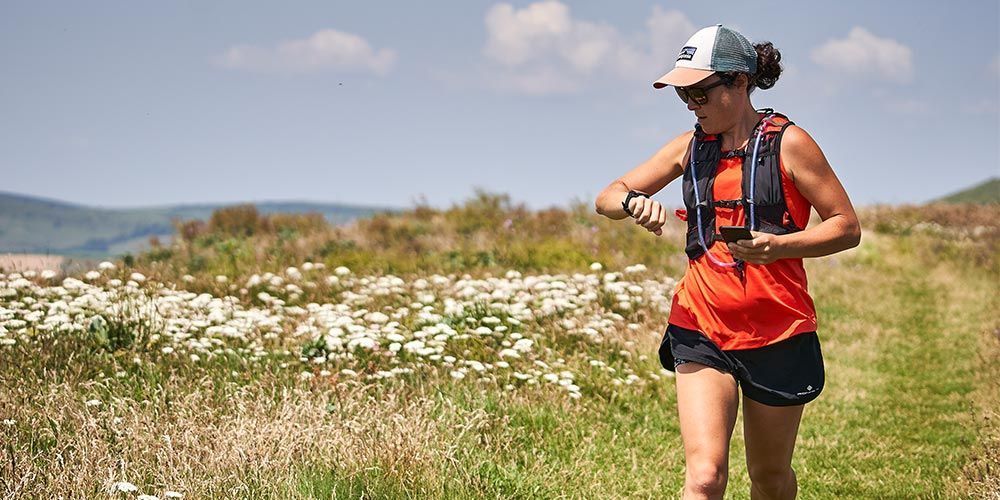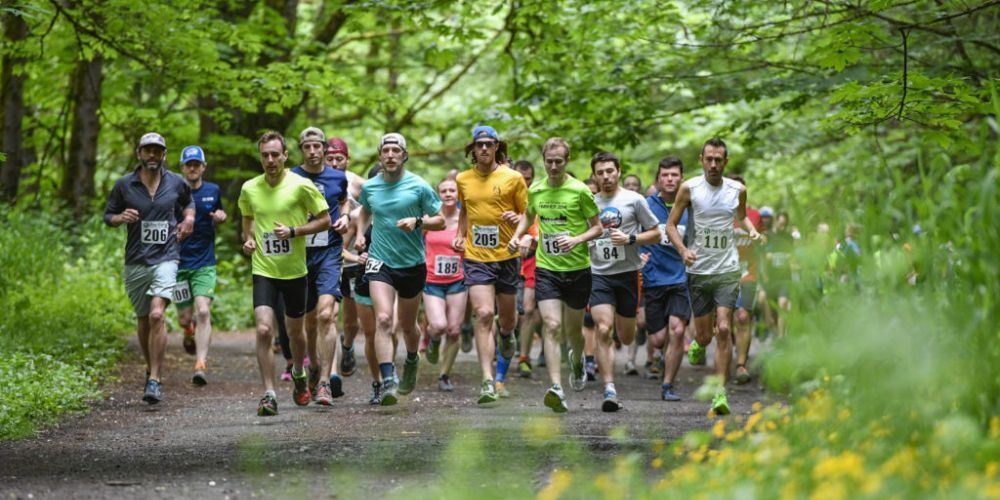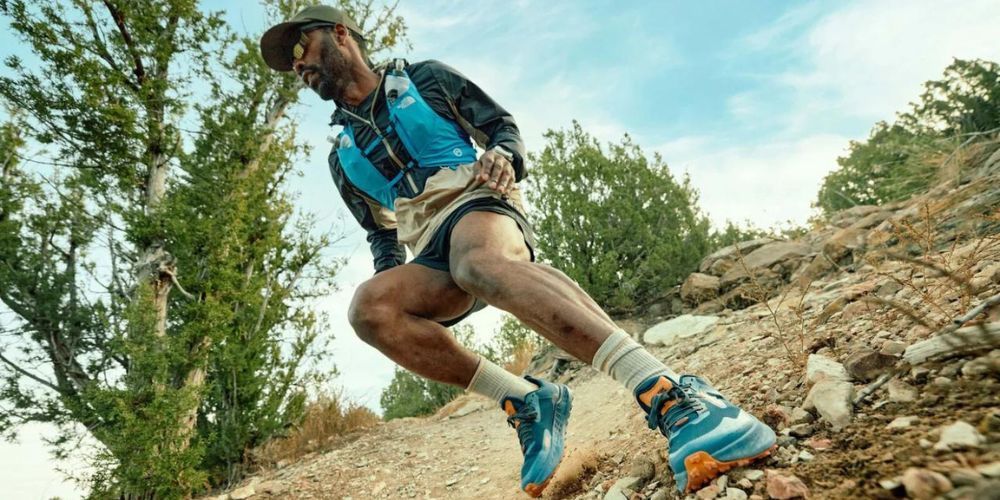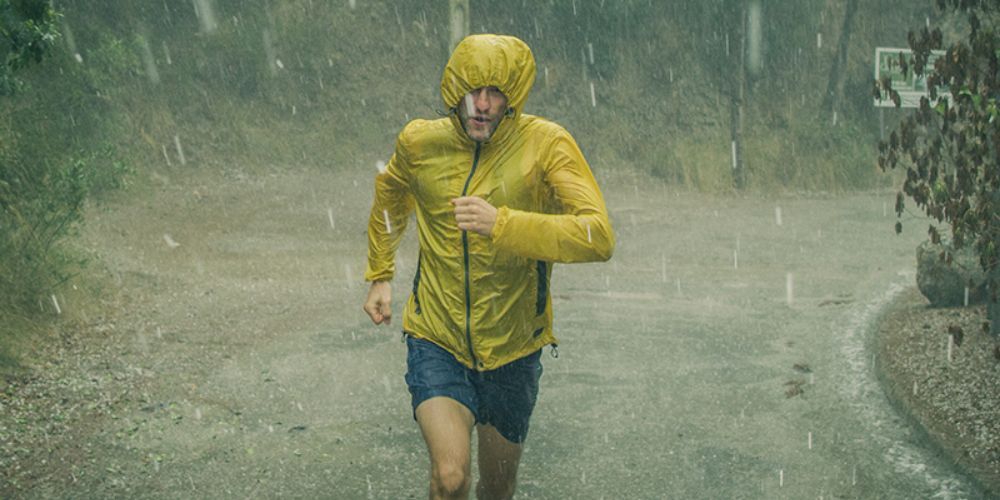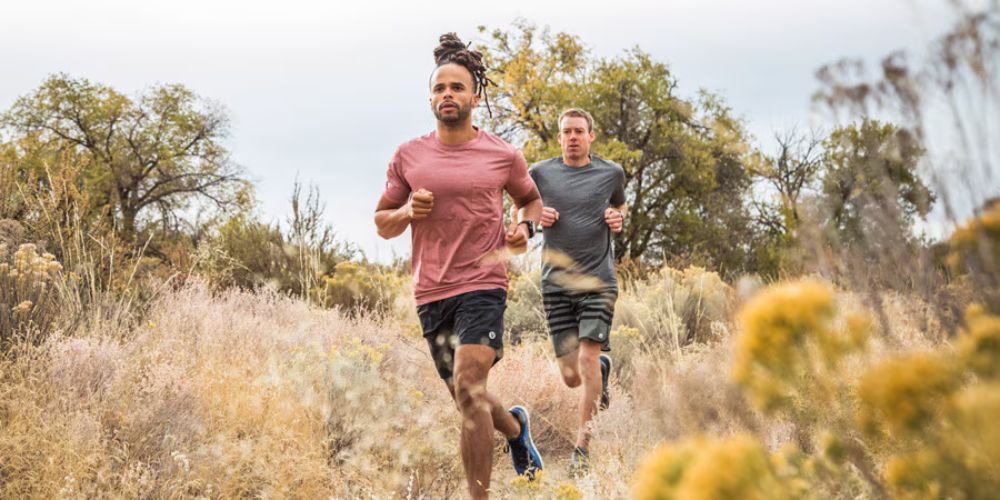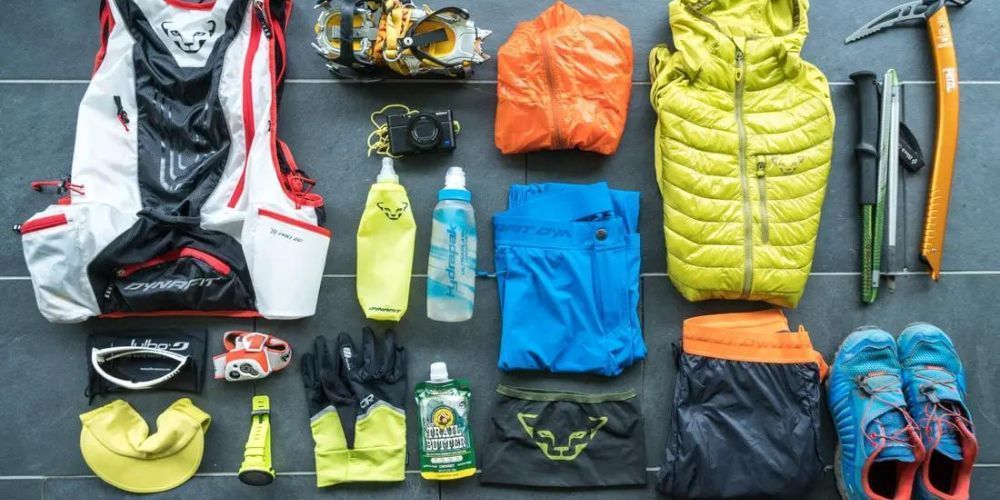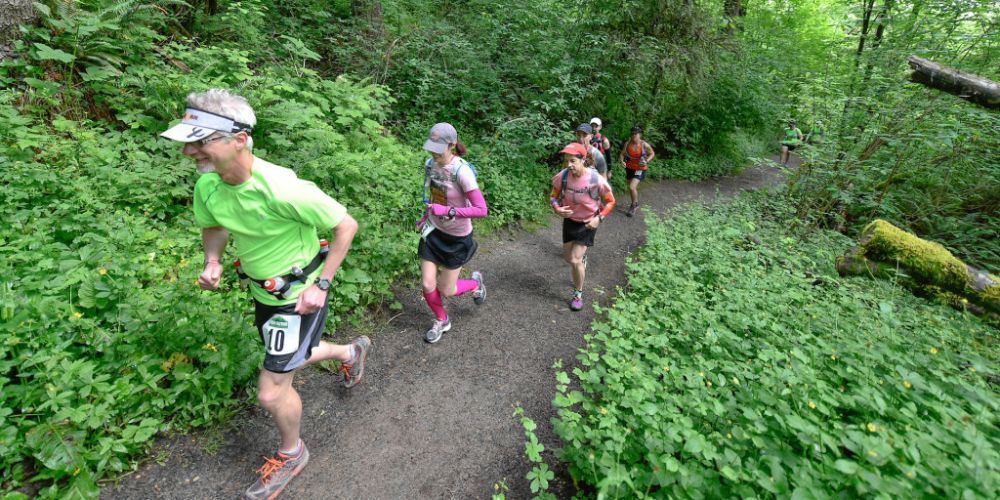William Flaiz is a lifelong athlete and outdoor enthusiast with a deep passion for adventure and sports. With over two decades of experience competing in marathons, triathlons, adventure races, and a wide range of recreational activities, William brings a wealth of knowledge to Sports and Nature Gear. Having explored 49 U.S. states and over 25 national parks, his extensive travels and hands-on experience with gear and gadgets provide readers with practical, expert advice for their own outdoor adventures. Whether it’s running, biking, kayaking, or hiking, William’s insights are invaluable to anyone looking to enhance their experience in the great outdoors. Read his full bio.
Trail Running 101: Essential Tips for Outdoor Fitness Enthusiasts
Trail Running 101: Essential Tips for Outdoor Fitness Enthusiasts
Trail running is more than just jogging outdoors; it's a unique discipline that combines fitness with nature exploration. This outdoor activity has distinct benefits such as reduced injury risk compared to its urban counterpart due to softer surfaces that gently absorb impact. Surprisingly, it’s not all about strength and endurance but also involves navigation skills as you thread your way through winding paths. Now, let’s take a closer look at how this sport could be easier on your body.
Trail running offers a unique experience in natural settings, emphasizing the importance of proper footwear with dedicated trail shoes and essential gear such as technical clothing, hydration systems, and safety tools. Beginners can begin by exploring local urban trails or connecting with running communities for recommendations and tips. It's crucial to gradually build skills in navigating rugged terrain while enjoying the physical and mental benefits of this challenging yet rejuvenating activity.

Benefits of Trail Running
Trail running offers several noteworthy advantages for fitness enthusiasts, going beyond just being a fun way to enjoy the great outdoors.
Lower Injury Risk
Running on trails provides softer surfaces that reduce the impact on joints compared to harder road surfaces. This crucially lowers the risk of overuse injuries, such as shin splints and stress fractures commonly associated with running on pavement. Additionally, the uneven terrain and natural obstacles encountered in trail running encourage the engagement of smaller, stabilizing muscle groups, leading to greater overall strength and agility—an organic way to challenge your body.
Enhanced Physical Challenge
The undulating terrain of trails, complete with steep inclines and declines, offers a workout that is dynamic and engaging. Not only does this present an exhilarating change from monotonous road running, but it also constantly challenges your balance, coordination, and cardiovascular system—resulting in a more comprehensive exercise routine. Some runners find the technical aspects of trail running akin to solving a puzzle - you're constantly making split-second decisions about foot placement and navigating around natural obstacles like rocks, roots, and fallen branches. This requires enhanced focus and concentration, making it a great way to engage not only your muscles but also your mind.
Calorie Burning
Avid trail runners often rave about how many calories can be burned during a trail run. The varied terrain and elevation changes demand greater energy expenditure per mile compared to road running, making it an effective workout for both weight management and overall fitness improvement. According to a study published in the Journal of Applied Physiology, trail running can burn approximately 10% more calories than running on a flat surface—ideal for those aiming to maximize calorie burn without significantly increasing their mileage.
In short, the physical demands and mental stimulation inherent in trail running make it an excellent choice for those looking for a full-body workout that goes beyond merely covering miles.
Transitioning from the benefits of trail running, let's now dive into preparing your body and mind for the rigors of trail runs—helping you build a solid foundation for an exhilarating outdoor adventure.
Preparing Your Body and Mind for Trail Runs
Trail running isn't solely about putting one foot in front of the other. It's about adapting to uneven terrain, navigating through challenging obstacles, and maintaining mental resilience. To prepare your body for these demands, you'll need a well-rounded training regimen that focuses on building specific skills and abilities tailored to trail running.
First and foremost, incorporating exercises that improve balance, agility, and stability is crucial for navigating the rugged and unpredictable terrain. Single-leg squats, lateral bounds, and core stabilization exercises are excellent additions to your training routine. These exercises help strengthen the muscles that provide stability during uneven movements, reducing the risk of injury and enhancing overall performance.
Furthermore, mental preparation is equally important. Trail running presents its fair share of unexpected challenges, from steep ascents to technical terrain and extended distances. Developing mental resilience will allow you to stay focused and confident as you tackle these obstacles head-on.
One valuable tip for mental preparation is visualization. By mentally rehearsing yourself conquering different terrains or going through challenging sections of a trail, you can build mental toughness. This practice allows you to face these situations during actual runs with clarity and confidence, helping you weather setbacks and push through difficult moments.
Focusing on both physical training and mental fortitude will set you up for success in tackling the diverse landscape of trail running.
Imagine that you're out on a trail, navigating through rocky, uneven surfaces. Your body must adjust constantly to maintain balance and control. Training for this scenario involves preparing your muscles to handle these dynamic movements with strength and agility.
Furthermore, consider the mental aspect; visualize yourself maintaining focus as you tackle uphill climbs or winding paths. This can help boost your endurance when tackling similar challenges during an actual run.
Moving from preparing both body and mind for trail runs, let's now turn our attention to the essential gear that can enhance your trail running experience.
Essential Gear Recommendations for Trail Running
When it comes to trail running, the right gear makes all the difference. It's not just about comfort but also safety and efficiency on the trails. Let's explore some essential pieces of gear that will set you up for success.
Trail Running Shoes
First off, let's talk shoes. Trail running shoes are specifically designed to handle uneven terrain, so it's crucial to invest in a pair that offers superior grip, stability, protection, and durability.
The La Sportiva Cyklon shoes are an excellent choice for their versatility and grip. They provide good footwork and agility, making them perfect for navigating diverse trail conditions. Although they lack a rock plate, they offer exceptional ground feel and traction on loose terrain. Another reputable option is the Saucony Peregrine 14 shoes, known for their lightweight build and improved tread compound for various conditions.
Hydration Systems
Staying hydrated during a trail run is absolutely essential, especially on longer runs where access to water might be limited. Hydration vests or waistpacks that allow convenient access to fluids can be a game-changer.
Consider the Salomon Adv Skin 12 hydration pack — it's light, low-profile, and provides ample storage space for your water, snacks, and other essentials needed for long days on the trails.
Proper Apparel
Choosing the right apparel can make your trail run much more comfortable. Opt for moisture-wicking clothing that helps keep you dry and prevents chafing. Moisture-resistant socks are vital to keep your feet dry and blister-free, while gaiters can prevent debris from entering your shoes during the run.
Investing in proper gear such as these can significantly enhance your trail running experience—ensuring comfort, safety, and peak performance.
Equipped with the right gear, you're now ready to take the next step to elevate your trail running experience by exploring proven training strategies.
Proven Training Strategies for Trail Running
Trail running isn't just about putting one foot in front of the other. It's a full-body workout that calls for strength and agility—a good balance of cardiovascular endurance and muscle prowess. So, let's delve into the nitty-gritty details and unique training strategies to make your trail running experience more enjoyable and rewarding.
Strength and Conditioning
One of the best ways to prepare your body for challenging trails is strength training. A well-rounded approach focusing on legs, core, and upper body helps to enhance stability and reduce the risk of injury. When you're navigating uneven terrains, you need a strong base to rely on.
For your legs, exercises like squats, lunges, and calf raises are excellent at building strength, while planks, Russian twists, and leg raises help improve core stability. As for upper body strength, push-ups and pull-ups are great choices. Building overall body strength not only improves your performance but also reduces the risk of common trail running injuries such as ankle rolls and muscle strains.
Hill Workouts
Hills are an inevitable part of trail running, so it's essential to incorporate specific training to tackle them with confidence. This means including hill repetitions and ascending/descending intervals in your training regimen. These workouts will help build muscular strength, improve stamina, and foster mental resilience for the challenges of steep inclines and declines during trail runs.
Remember, hill workouts are not just about climbing uphill but also practicing controlled descents—an often-overlooked skill crucial in mastering technical downhill sections. By preparing your body to handle the physical demands of both uphills and downhills efficiently, you'll be better equipped to manage various terrains with ease.
With these strategic training tips in mind, you'll be well-prepared to take on the rigorous demands of trail running with confidence and capability.
Armed with these training strategies, let's now shift our focus to understanding the elements one can anticipate during a trail race.
Elements to Anticipate During a Trail Race
Trail running is anything but the predictable streets or tracks of city and road running. The diversity in terrain and elevation changes will surely keep you on your toes.
Varied Terrain
Expect to encounter a multitude of different surfaces and obstacles during your trail race. From dirt paths to rocky sections, and potentially muddy or wet areas, each step could present a new challenge. Adapting quickly while traversing these uneven surfaces and natural obstacles is crucial.
Remember: Your footing will continuously change, so it's important to concentrate on where you place your feet to avoid injury.
Elevation Changes
Mentally and physically prepare for steep climbs and descents. Unlike flat road running, elevation changes will require different pacing and effort. Hiking up steep hills can be an acceptable strategy, especially when the terrain becomes too challenging for running. On the other hand, downhill sections will put extra strain on your muscles due to gravity pulling you down, so paying attention to your form during descents is key to avoiding injuries.
Pro Tip: Maintain good posture and use your arms for balance and momentum while navigating tricky downhill sections.
Adapting to these diverse terrains and elevation changes requires specific training and preparation. It's essential for runners to incorporate hill workouts and practice running on various types of terrain before race day.
The joy of trail running lies in the unpredictability of nature—embracing these challenges and being prepared for the unexpected is what makes this sport so invigorating!
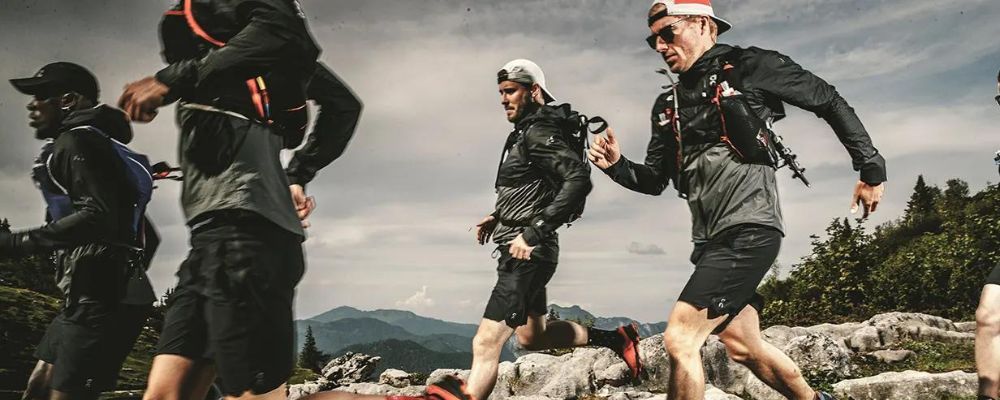
Dealing with Safety Risks in Trail Running
Trail running alone can pose risks, but there are ways to mitigate these risks and stay safe. It's important to be aware of potential dangers and take necessary precautions. Here are some essential tips for dealing with safety risks in trail running.
Stay Informed and Prepared
Inform someone of your running plans, including your route and estimated return time. This way, in case of unforeseen circumstances, someone will know where you are and when you're expected back.
Consider bringing a GPS device or a paper map for navigation and to call for help if needed. Starting on familiar easy trails before taking on more challenging adventures allows you to build confidence and gradually acclimate to different terrains. Choosing higher trafficked trails also adds an extra layer of safety as there is a possibility of getting help if needed.
Be Weather-Wise
Trail runners should always check the weather before heading out and bring appropriate gear for the conditions. Conditions such as rain, snow, or extreme heat should dictate the choice of clothing and accessories. Carrying essential items such as a rain jacket, running shoes suitable for the terrain, extra layers, snacks, and water will ensure you're prepared for any unexpected shifts in weather.
Moreover, knowing the potential dangers of the area you're running in, including wildlife and terrain-specific hazards such as steep inclines or loose rocks, is crucial for maintaining safety during trail runs.
In conclusion, staying informed, being prepared, checking weather conditions, carrying essential safety items, and being mindful of potential dangers are key strategies for dealing with safety risks during trail running. These practices not only ensure your safety but also enhance your overall experience on the trails. Safety should always be a top priority when enjoying outdoor activities like trail running.
Launching Your Trail Running Journey
Trail running is an immersive outdoor activity that not only puts your body to the test but also connects you with nature in a unique way. Whether you're a novice or seasoned runner, there are essential considerations when embarking on this thrilling form of fitness. Here are the foundational steps to kickstart your trail running journey.
Research Local Trails
When venturing into the world of trail running, identifying accessible and suitable trails is vital. Utilize our platform to find detailed information about popular trail routes, including terrain difficulty ratings, distance markers, elevation profiles, and user reviews. These insights will help you choose a trail that aligns with your skill level and preferences. For beginners, seeking out well-maintained and marked trails with gentle elevations can ease the transition from road running to trails and ensure setting out with realistic expectations while avoiding unexpected challenges.
Moreover, consider factors such as the type of terrain (rocky, muddy, forested), the availability of water sources along the route, and seasonal conditions. Each trail has its own character and presents unique challenges, so understanding these elements will prepare you for what lies ahead.
Connect with Trail Running Groups
Engaging with a supportive community is invaluable when stepping into the world of trail running. Joining local trail running groups through our platform enables you to gather firsthand advice from experienced runners, acquire training tips tailored to trail terrain, and connect with like-minded individuals who share your passion for outdoor fitness.
These groups are a wellspring of knowledge, providing insights into successful strategies for navigating technical trails, dealing with varying weather conditions, and even recommended gear for specific terrains.
The camaraderie and encouragement shared within these communities can uplift your spirits when facing challenges, motivate you during tough runs, and offer insights into lesser-known trails that aren't widely publicized. By connecting with seasoned runners, you can gain valuable guidance on pacing, load management, nutrition strategies during longer runs, and how to recover after more demanding sessions.
In summary,
- Thoroughly researching local trails before setting out,
- Becoming an active member in a trail running community,Poses you well-informed and supported as you prepare to embrace the unpredictable yet exhilarating world of trail running.
Trail running opens up a world of adventure and physical challenge while offering a harmonious connection with nature. By taking these initial steps, you set yourself up for a rewarding journey through scenic landscapes and invigorating trails. Go forth and conquer those paths!
AUTHOR
Nature's Playbook
As an Amazon Associate I earn from qualifying purchases.


